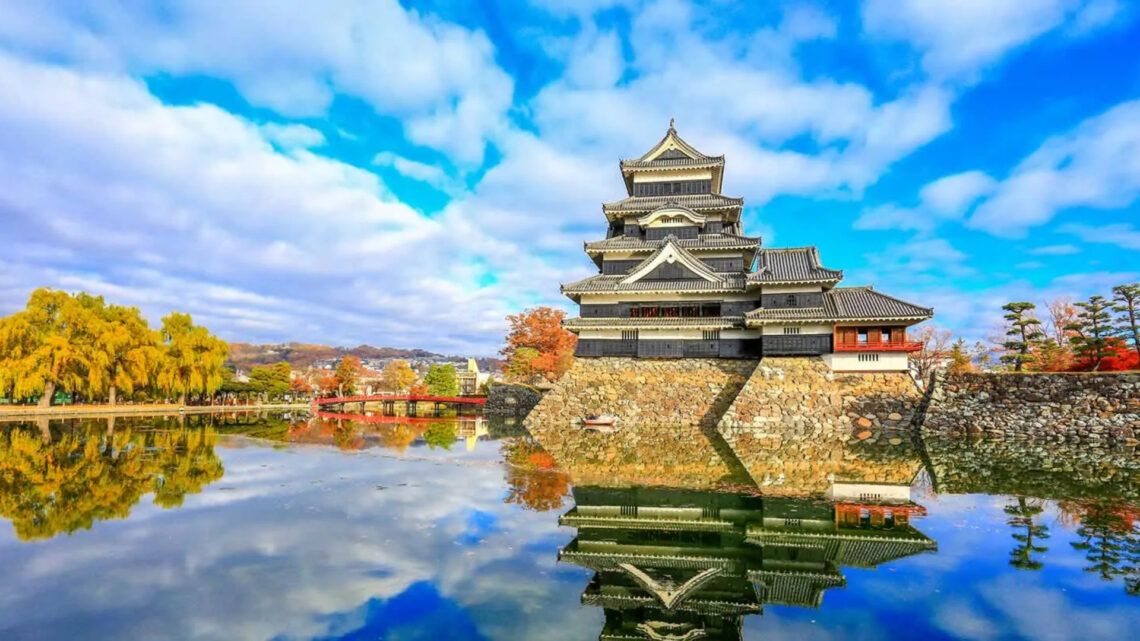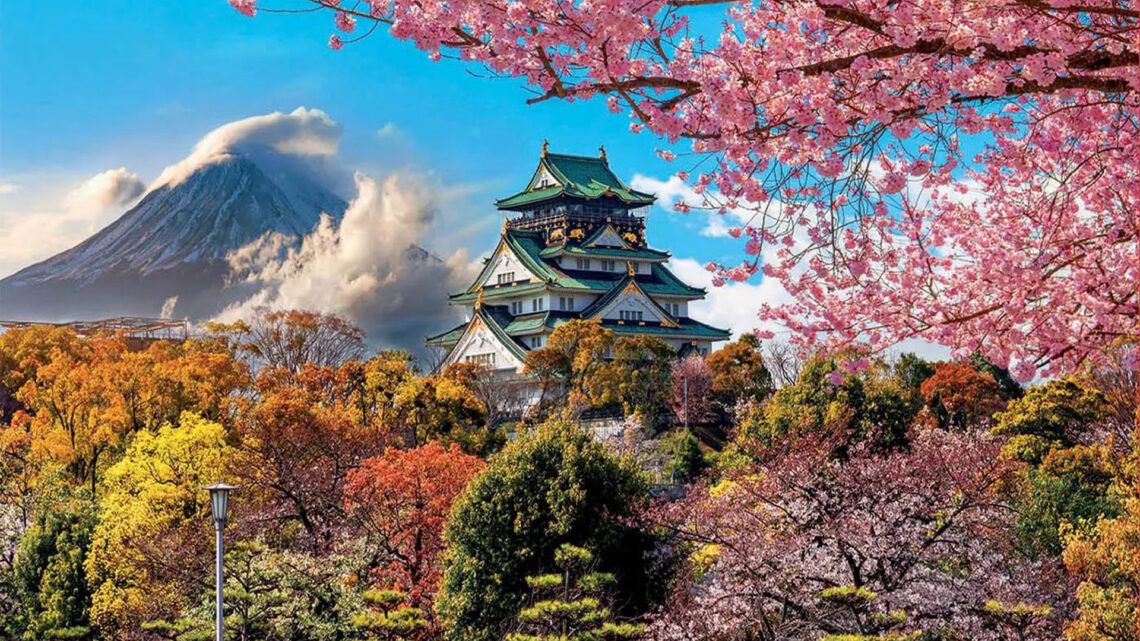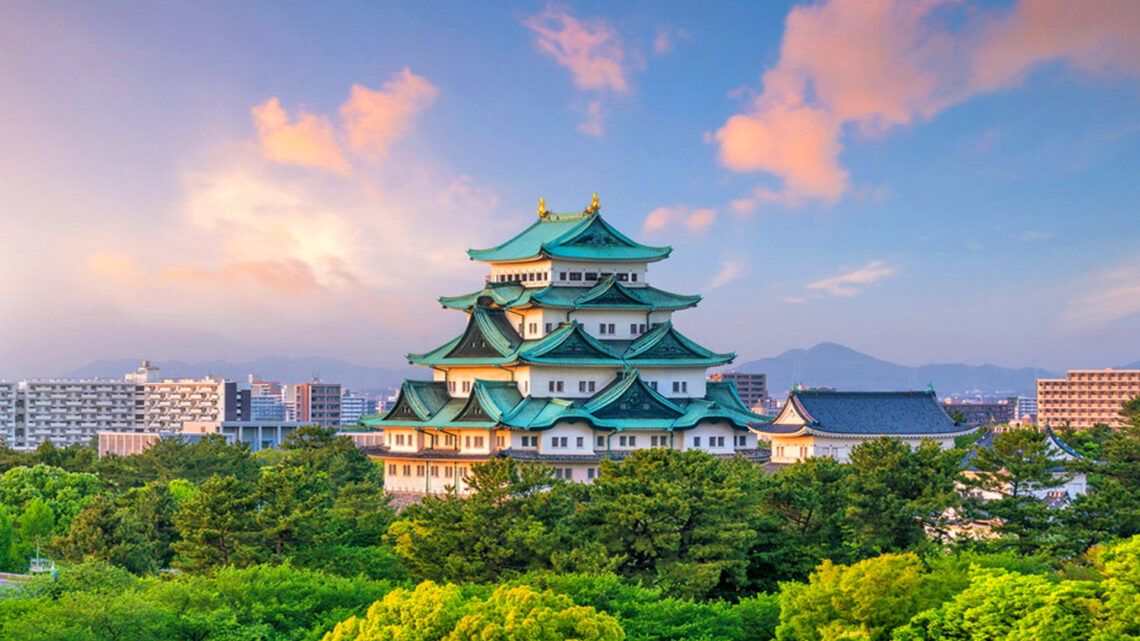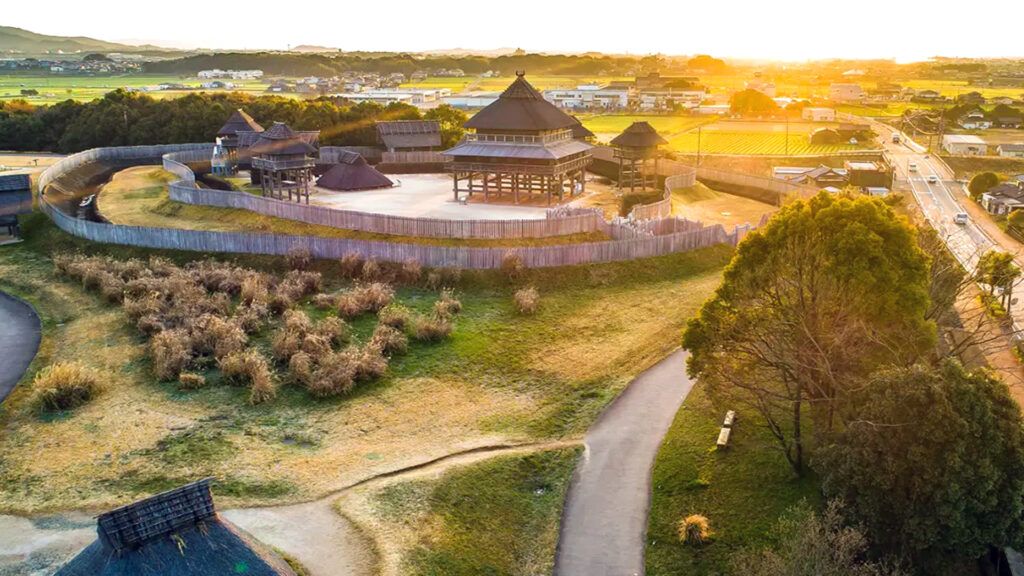
Yoshinogari is a significant archaeological site in Japan that offers a fascinating glimpse into the Yayoi period, a time spanning approximately from 300 BCE to 300 CE. This era marks the transition from the Jomon period, during which people primarily lived as hunters and gatherers, to a society increasingly engaged in agriculture and the establishment of permanent settlements. Located in Saga Prefecture on the island of Kyushu, Yoshinogari is an outstanding example of such a settlement and provides valuable insights into the culture, society, and technology of this era.
The discovery of Yoshinogari dates back to 1986, when a routine survey during a construction project uncovered a multitude of artifacts. These findings prompted extensive archaeological excavations, which ultimately revealed a large, complex settlement. Yoshinogari covers an area of about 40 hectares and includes numerous graves, residential buildings, storage facilities, and fortifications.
One of the most remarkable discoveries at Yoshinogari are the so-called Kofun, large burial mounds richly furnished with grave goods. These goods include bronze mirrors, weapons, and jewelry, indicating advanced metallurgy and extensive trade. The graves also suggest a hierarchically structured society where the elite were honored with elaborate burials.
A central feature of the settlement is its extensive fortification system, consisting of a double moat and a wooden palisade. These defensive structures suggest that the inhabitants of Yoshinogari sought protection from enemy attacks and were possibly involved in conflicts with neighboring communities. The fortifications are evidence of the organized defense strategies and advanced engineering of the Yayoi period.
The residential buildings in Yoshinogari are also of great interest. Mostly made of wood and built on stilts to protect against moisture and pests, this construction method, known as stilt housing, was widespread in many parts of Japan and demonstrates the people’s adaptability to their environment. The size and features of the houses vary, providing clues about the social status of the inhabitants.

In addition to residential buildings, numerous storage facilities were discovered, used for storing grain and other supplies. These storage buildings indicate the agricultural lifestyle of the Yayoi society, which relied on the cultivation of rice and other crops. The storage of food played a central role in the stability and growth of the community.
Yoshinogari also offers insights into the religious practices of the Yayoi period. Several shrines and sacrificial sites discovered within the settlement suggest that religious ceremonies and rituals were an important part of community life. These sites were likely dedicated to the worship of nature deities and ancestral spirits, reflecting the spiritual beliefs of the Yayoi people.
Another fascinating aspect of Yoshinogari is the discovery of bronze and iron tools, which demonstrate advanced metalworking technology. These artifacts include tools, weapons, and agricultural implements that facilitated daily life and increased productivity. Metallurgy was a significant advancement during the Yayoi period and greatly contributed to societal development.
The excavations at Yoshinogari also uncovered a variety of ceramic vessels, which played a crucial role in daily life. These vessels were used for storing and preparing food as well as for ritual purposes. Yayoi-period ceramics are characterized by their simple but functional design, distinct from the more elaborate Jomon ceramics.
Another significant find from Yoshinogari is the Dotaku, a bronze bell likely used in religious ceremonies. These bells are a characteristic feature of the Yayoi period and reflect the technological and cultural development of the society at the time. The discovery of Dotaku in Yoshinogari underscores the site’s importance as a cultural and religious center.
Today, Yoshinogari is a major open-air museum that provides visitors with a vivid impression of the Yayoi period. The faithfully reconstructed buildings and facilities allow for an immersive experience of the Yayoi people’s way of life and cultural achievements. The museum also offers numerous interactive exhibits and educational programs that promote understanding and interest in this important era of Japanese history.
However, the significance of Yoshinogari extends beyond the archaeological finds. The site is a crucial part of Japan’s cultural heritage, contributing to the country’s identity and historical consciousness. The study and preservation of Yoshinogari are therefore vital for imparting an understanding of the roots of Japanese culture and history to future generations.
Overall, Yoshinogari provides a fascinating glimpse into the Yayoi period and the development of early Japanese society. The archaeological finds and reconstructions at Yoshinogari present a vivid picture of an era marked by significant technological, social, and cultural changes. The site is a valuable testament to human history and a place of great historical and cultural interest.
The Geographical Location of Yoshinogari
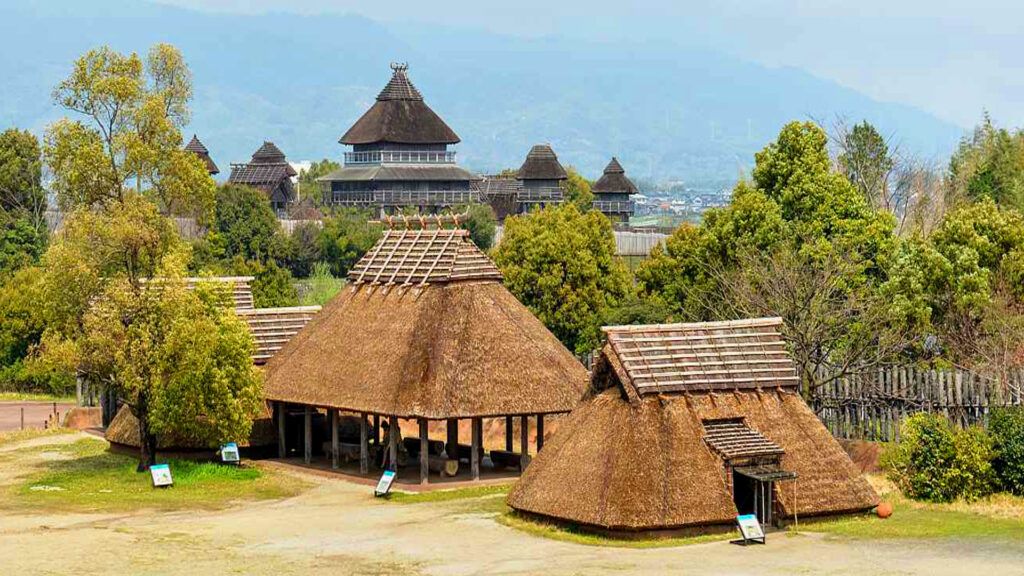
Yoshinogari is located in Saga Prefecture on the island of Kyushu, the southernmost of Japan’s four main islands. This geographical location plays a crucial role in understanding the development and significance of the settlement. Kyushu is known for its fertile soils and mild climate, which provide ideal conditions for agriculture. The region around Yoshinogari, in particular, is characterized by its expansive plains and proximity to important rivers, further enhancing its agricultural potential.
The proximity to the Ariake Sea, a large bay on the western coast of Kyushu, facilitated access to maritime resources and contributed to the development of trade. The coastal location allowed the inhabitants of Yoshinogari to engage in fishing and gathering seafood, enriching their diet and strengthening their economic base. Additionally, this geographical setting promoted trade with other regions of Japan as well as the Asian mainland, facilitating cultural and technological exchange.
The region around Yoshinogari is crisscrossed by numerous rivers, which not only supported agriculture but also served as natural transportation routes. These waterways enabled the movement of goods and people, promoting integration and connectivity among communities during the Yayoi period. The rivers also provided a reliable water supply, essential for rice cultivation, which played a central role in the Yayoi economy.
Yoshinogari’s strategic location on elevated ground offered a good vantage point over the surrounding landscape and protection from floods. This was particularly important in an era when natural disasters posed a constant threat. The elevated position also facilitated the defense of the settlement, allowing the inhabitants to detect and repel potential attackers early.
The topographical features around Yoshinogari, such as hills and flat plains, offered diverse opportunities for settlement construction and agricultural activities. The inhabitants utilized the flat plains for growing rice and other crops, while the hills might have served as locations for residential buildings and fortifications. This use of the natural environment demonstrates the adaptability and technical skill of the Yayoi people.
In summary, the geographical location of Yoshinogari is a key factor in understanding the settlement and its development. The fertile soils, proximity to waterways, and mild climate provided ideal conditions for agriculture and promoted trade and cultural exchange. The strategic position and natural features contributed to the security and prosperity of the community, making Yoshinogari a significant settlement during the Yayoi period.
Journey to Yoshinogari

A trip to Yoshinogari is a fascinating experience that delves deep into the history and culture of the Yayoi period. To visit this historical site, one can start from the city of Saga, which is nearby and well-connected by public transportation. From Saga, Yoshinogari can be easily reached by train or bus.
Upon arrival at Yoshinogari, visitors first enter the visitor center, which serves as the starting point for exploring the archaeological site. Here, visitors receive an introduction to the history and significance of Yoshinogari through informative exhibits, interactive displays, and audiovisual presentations. The visitor center also offers guided tours led by experienced guides, providing deeper insights into the various areas of the settlement.
The actual tour of Yoshinogari begins with entering the reconstructed settlement, which impressively replicates the architecture and lifestyle of the Yayoi people. The stilt houses, built on high stilts, give a realistic picture of the living conditions of the time. Visitors can explore the interiors of these houses and see how the inhabitants organized and utilized their living spaces.
Another highlight of the trip is visiting the large burial mounds, known as Kofun. These burial mounds are impressive in their size and offer deep insights into the burial practices and social structures of the Yayoi period. Some of these graves are accessible and contain replicas of the valuable grave goods originally found there. These exhibits, including bronze mirrors, weapons, and jewelry, illustrate the advanced craftsmanship and material wealth of the society.
The fortified complex of Yoshinogari, with its wooden palisades and deep moats, is another fascinating part of the site. Visitors can walk along the defensive walls and explore the strategic arrangement of the fortifications. From here, there is also an impressive view over the entire site, highlighting the importance of these defenses for the settlement’s security.
Near the fortifications are the reconstructed storage buildings, used for storing grain and other supplies. These buildings provide insights into storage techniques and the significance of agriculture for the Yayoi society. Visitors can learn more about rice cultivation and the associated labor processes that formed the backbone of Yoshinogari’s economic activity.
A special experience during the trip to Yoshinogari is participating in the interactive workshops offered at the open-air museum. These workshops allow visitors to try traditional Yayoi-period crafts, such as pottery making or bronze working. These activities not only provide practical experience but also deepen the understanding of the cultural and technological achievements of the Yayoi people.
For families and children, there are special programs and activities that make learning fun. This includes treasure hunts, where young visitors explore various parts of the site and learn more about Yoshinogari’s history. These programs are ideal for sparking interest and curiosity in the younger generation and bringing the significance of the archaeological site to life.
Another part of the trip is visiting the religious sites within the settlement. These shrines and sacrificial sites provide insight into the spiritual beliefs and rituals of the Yayoi people. The sites are often simple, but their significance is made clear through explanations and displays in the museum. Here, visitors learn more about the worship of nature gods and ancestral spirits, which played a central role in the religious life of the Yayoi society.
After an extensive tour of the site, a break at the café in the visitor center is recommended, offering regional specialties and refreshments. This is a good opportunity to reflect on the impressions of the trip and discuss what has been seen. The café also offers a lovely view of the surrounding landscape, emphasizing the connection between the historical site and its natural environment.
To conclude the trip, visitors can stop by the souvenir shop in the visitor center, which offers a variety of mementos and replicas of artifacts found in Yoshinogari. These souvenirs are not only nice keepsakes but also a way to further explore and appreciate the history and culture of the Yayoi period.
A trip to Yoshinogari is not just a journey into the past but also an enriching experience that deepens the understanding and appreciation of Japan’s early civilizations. The well-preserved and lovingly reconstructed areas of the settlement, combined with the comprehensive information and interactive offerings, make Yoshinogari a unique and worthwhile destination for history enthusiasts and culture lovers alike.

